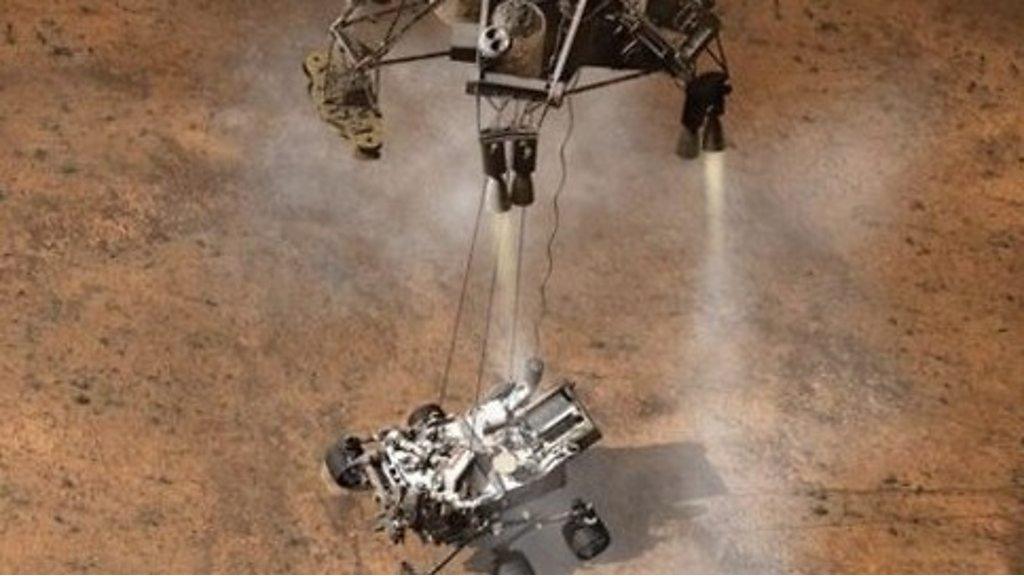Nasa says goodbye to Mars rover Opportunity after 15 years
- Published
- comments
Nasa ends Opportunity Mars rover mission
The US space agency Nasa says it's time to bid farewell to on its Opportunity Mars rover, declaring the mission over.
The six-wheeled robot last contacted Earth in June last year, but after a global dust storm hit, it went quiet.
Engineers hoped 'Oppy' would power back up when the skies cleared and sunlight hit its solar panels again - but there haven't been any signs of movement from the rover since.
Nasa has now given up attempts to contact the rover.
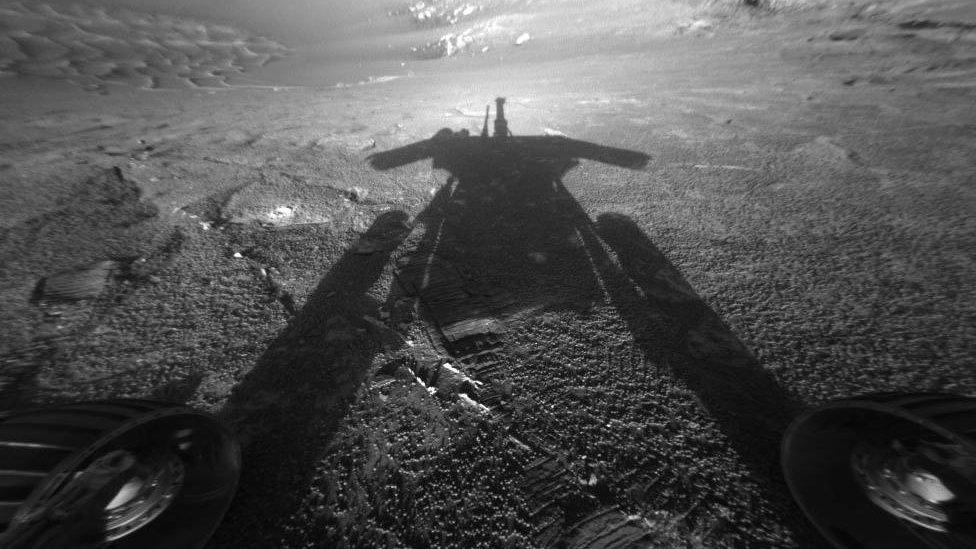
Opportunity landed on Mars in January 2004 as one-half of a two-rover mission called Mars Exploration Rovers (MER).
Nasa hoped both the rovers - Opportunity and Spirit - would work for at least 90 Martian days. (A day on Mars lasts about 40 minutes longer than on Earth.)
Spirit continued sending data back to Earth for 6 years, losing contact at last in 2010. Oppy kept going for 15 years.
Unsurprisingly though it had aged over this time - with its robotic arm failing, and its solar panels losing efficiency.
Oppy had even had to start driving backwards to try and stop it wearing out!
Nasa had even put together a special space-and-Mars-themed playlist to try and wake Opportunity up again.
Opportunity's project manager John Callas said: "We tried valiantly over these last eight months to recover the rover, to get some signal from it."
"We've listened every single day with sensitive receivers, and we sent over 1,000 recovery commands. We heard nothing and the time has come to say goodbye.
He said the robot had "transformed our understanding of our planet" over the last 15 years.
Back in 2013, when Oppy was nine years old, there were fears the rover was near the end of its life, with Mr Callas saying: "The rover could have a catastrophic failure at any moment. So, each day is a gift."
Is there other life on Mars?

Oppy is far from alone on Mars, - there are currently eight spacecraft from the world's space agencies on or orbiting Mars.
The Curiosity rover has been exploring the planet since it landed there in 2012, and last year sent back 16 pictures of the planet that scientists were put together to create a panoramic view of what Mars looks like.
Late last year Nasa also landed the In Sight robot onto the surface of the Red Planet, to help scientists study mars-quakes deep beneath the surface.
There are also more set to launch next year including NASA's Mars 2020 rover.
What did Mars rover, Opportunity, discover?
Announcing the end of Opportunity's mission, Thomas Zurbuchen, the associate administrator of the Science Mission Directorate at Nasa, said the rover had "remained silent" after a last-ditch effort to contact Opportunity on Tuesday.
But despite the loss of Oppy, the mood of Nasa staff at the press conference was one of celebration at what it achieved.
So here are some of Oppy's best bits...
Completing a marathon
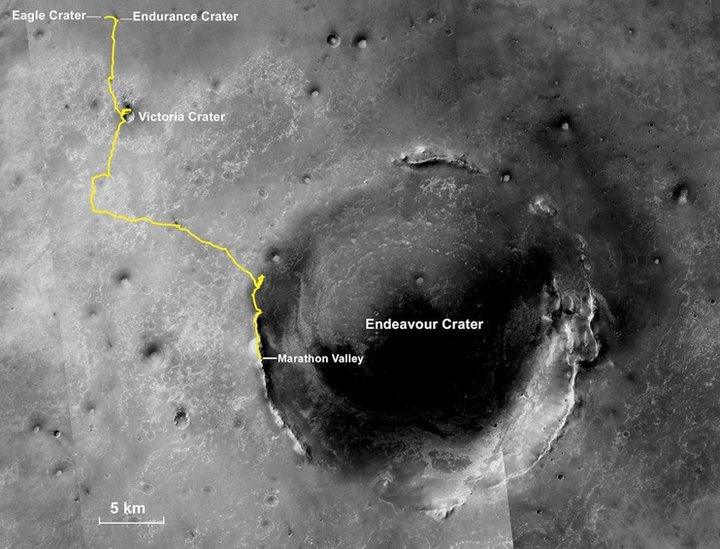
MARCH 2015: It had taken him eleven years, but by this point Oppy had travelled 26.2 miles, the equivalent of a marathon!
By 2018, it had travelled just over 28 miles, and still holds the record for the most travelled off-world rover.
Finding blueberries
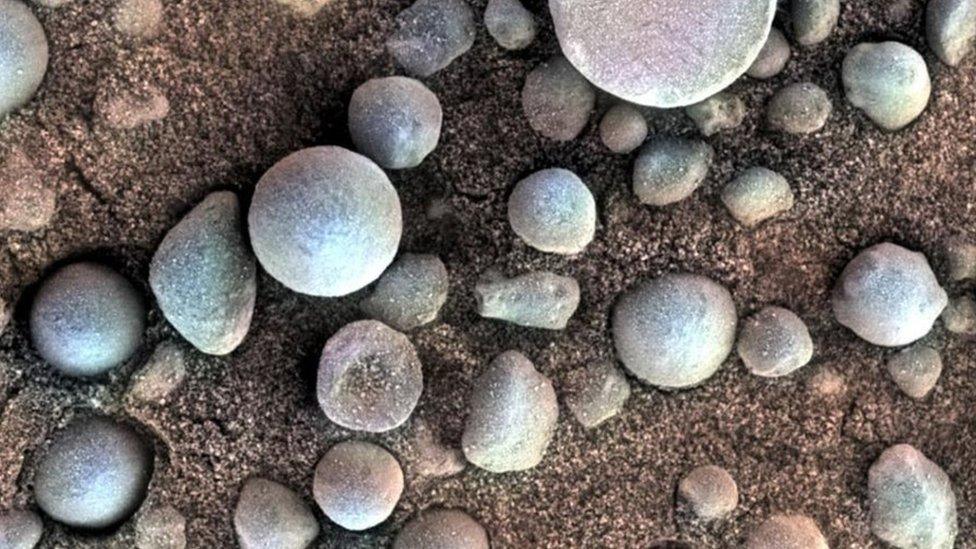
JAN 2015: Opportunity discovered these little balls embedded in outcrop rocks and scattered over some areas of soil inside a small crater. They were labelled blueberries, because of their dark blue colour due to a high concentration of the mineral hematite.
Snapping a 'jelly doughnut'
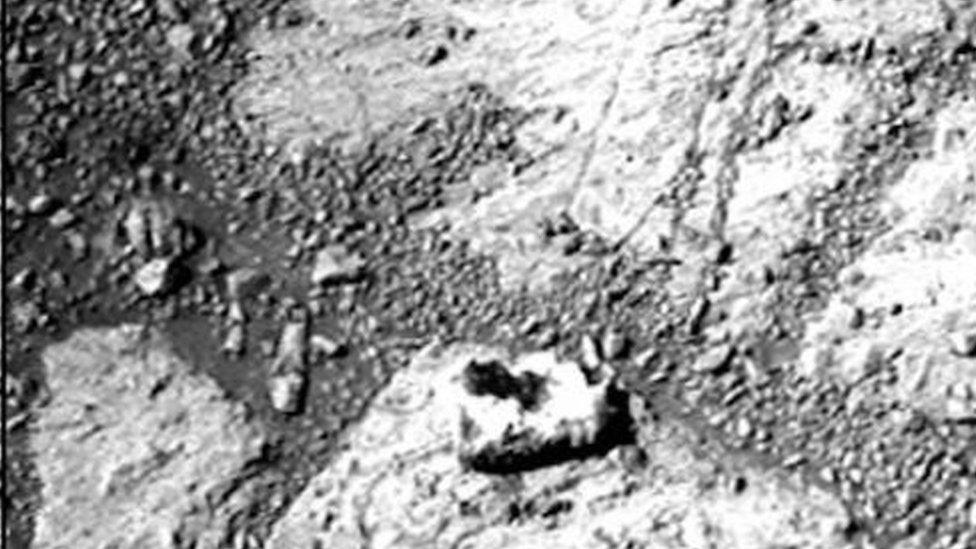
FEB 2014: Blueberries weren't the only strange rocks Oppy found. After it shared these pictures, everyone wanted to know what the stone - which people thought looked like a jelly doughnut - actually was.
Even William Shatner, who played Captain James Kirk in TV series Star Trek contacted Nasa to ask if they'd "ruled out the Martian rock throwers in the case of the jelly doughnut".
Discovering clay
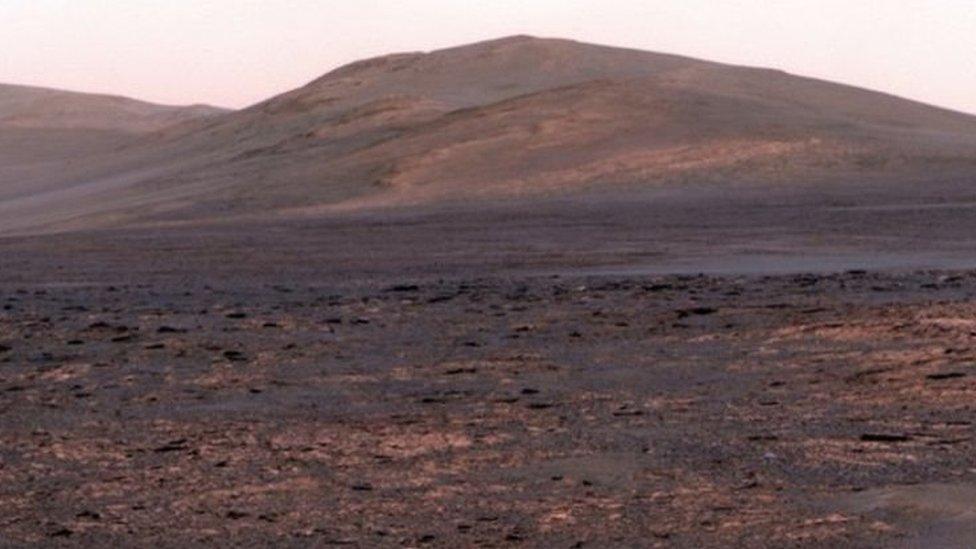
JUNE 2013: The robot found clay minerals in a type of rock called Esperance. It means the rock may have had a lot of contact with water in the past.
This helped scientists learn that Mars was much warmer and wetter billions of years ago that has previously been suggested.
Photographing a crater
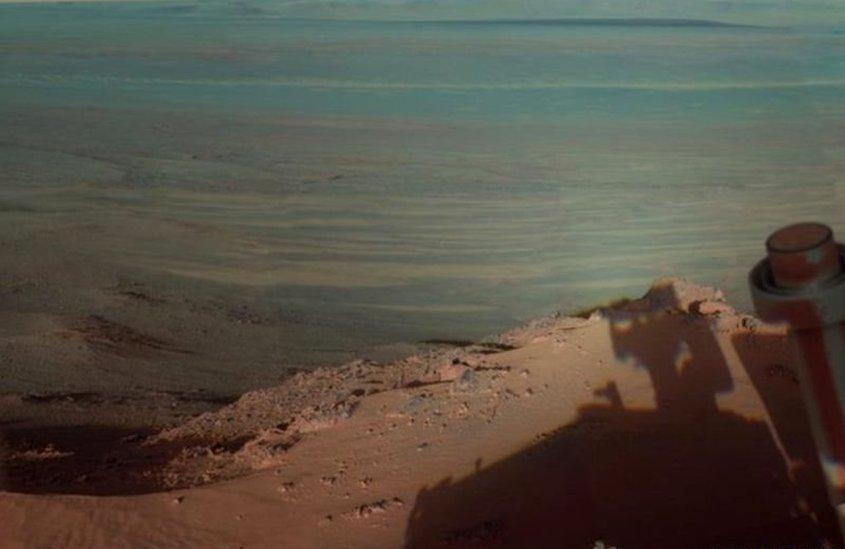
May 2012: Sending back amazing pictures like this!
This picture is actually made up of a dozen smaller images taken by the rover's panoramic camera over the Endeavour Crater.
Searching for 'water on Mars'
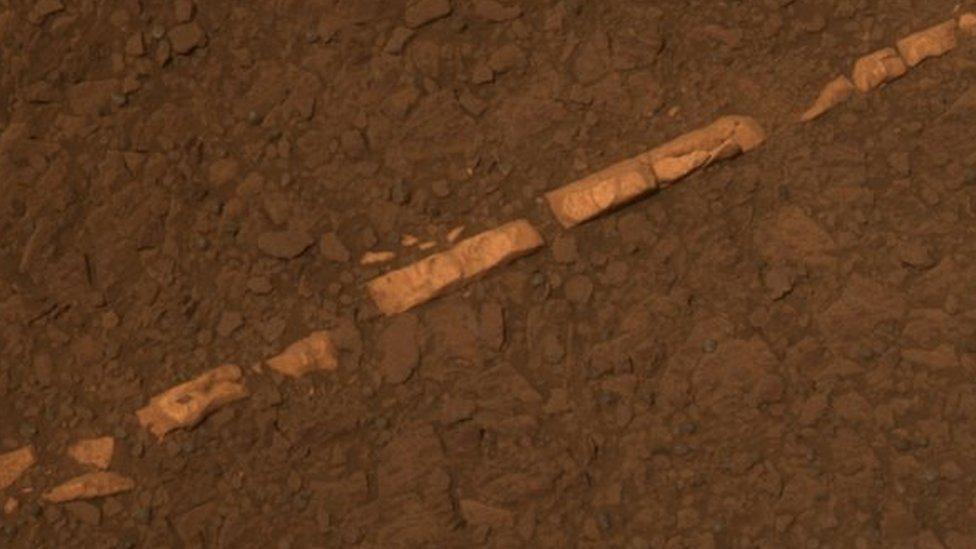
This is what the slivers looked like
DEC 2011: As an early Christmas present, Oppy found slivers of a bright material that looks very much like it is gypsum (calcium sulphate) - which at the time was the most powerful piece of evidence for liquid water on Mars.
A meteorite!

JAN 2005: This was one of Oppy's early discoveries: a meteorite roughly the size of a basketball, and the first meteorite ever discovered on another planet!
Great work Oppy! You did both your planet and ours proud.
- Published27 November 2018
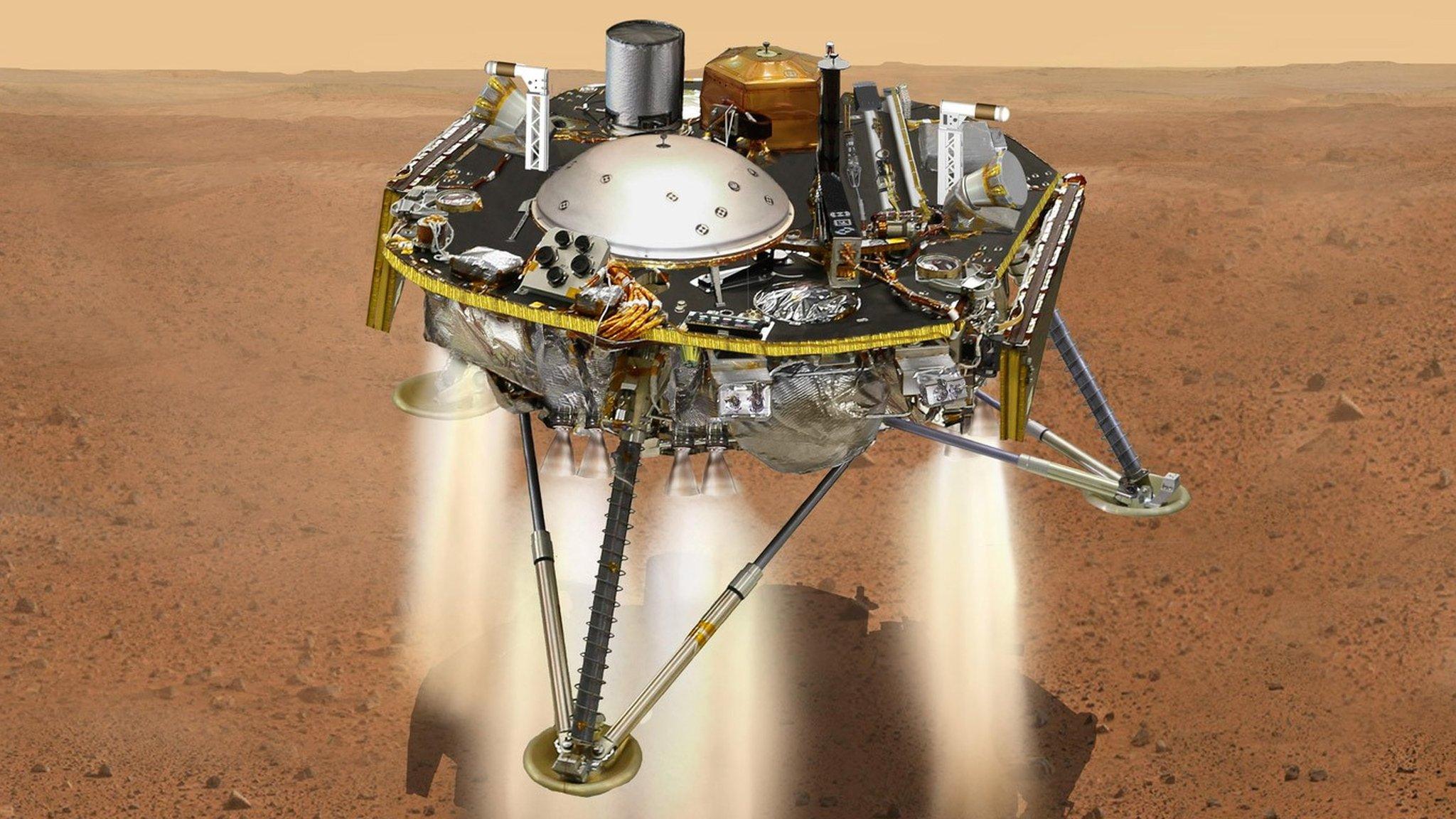
- Published3 February 2018
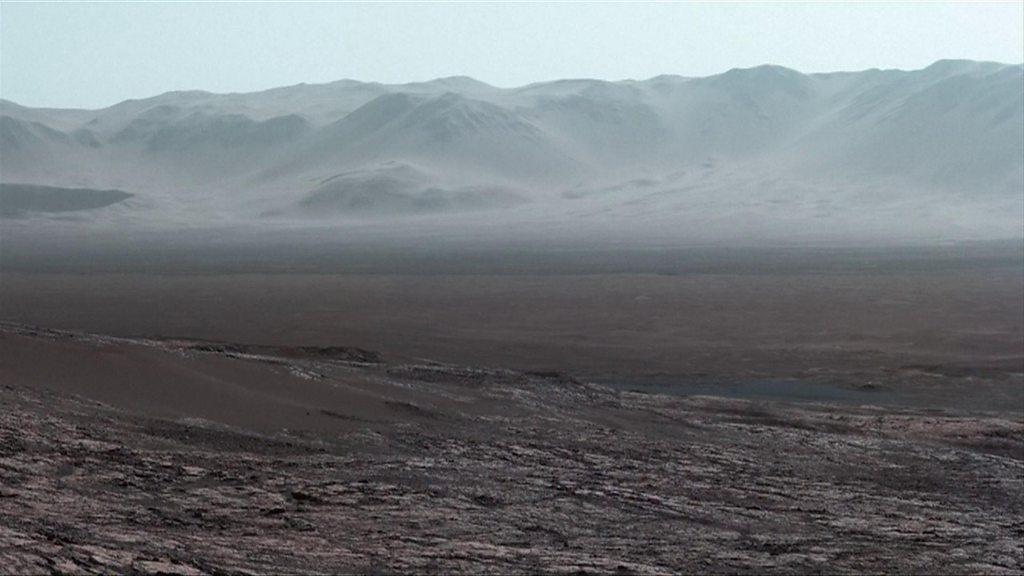
- Published15 June 2018
